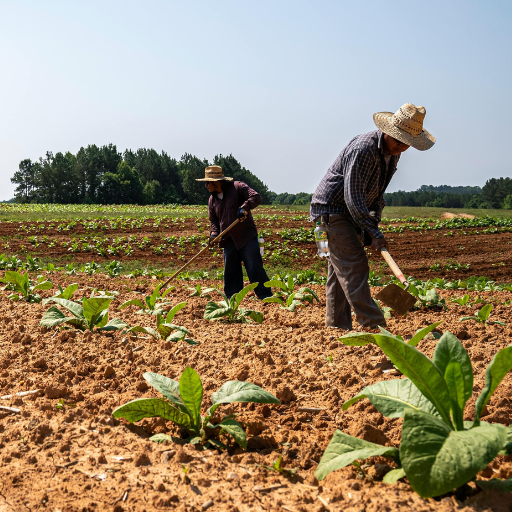The agricultural sector continues to grapple with persistent labor shortages, a challenge expected to intensify further in 2025. This issue, driven by an aging workforce, declining interest from younger generations in farming, and complex immigration policies, necessitates a multi-faceted approach involving advanced technology, comprehensive policy reform, and innovative workforce strategies to ensure a sustainable future for food production.
Key Trends Shaping the Agricultural Labor Landscape in 2025
- Aging Workforce and Declining Domestic Interest: The average age of North American farmers remains high, nearing 60, with only a small percentage under 35. This demographic trend, coupled with factors like high land costs, significant initial investments, unpredictable commodity prices, and demanding work-life balance, continues to deter new entrants.
- Intensifying Labor Gap: Projections indicate a growing deficit, with the U.S. agricultural industry potentially facing a need for approximately 2.4 million more farmworkers in 2025. This shortage can lead to unharvested crops and increased food costs.
- Escalating Labor Costs: Rising wages, particularly the Adverse Effect Wage Rates (AEWR) for H-2A visa holders and associated fees, are significantly impacting farmers' profitability. For some specialty crop and greenhouse growers, labor costs are reaching nearly 40% of overall expenses, forcing difficult decisions like reducing less profitable crops or even considering selling farms.
- Climate Change Impacts: Extreme weather events are increasingly affecting agricultural productivity and labor availability, leading to production fluctuations and more labor needed to deal with new pests and weather pressure. Extreme heat and storms also result in more breaks or days off for workers.
- Continued Reliance on Temporary Foreign Workers: Many farms remain heavily dependent on temporary foreign worker programs like the H-2A visa in the U.S. and Canada's Seasonal Agricultural Worker Program (SAWP) and Agri-Food Pilot. However, these programs face challenges with increasing costs, stricter enforcement, and bureaucratic hurdles. Canada's Agri-Food Pilot, for instance, has a 2025 application cap and is set to expire in May 2025.
- Shifting Farm Structures: There's an observed trend towards larger farm operations, with a decline in sole proprietorships and family corporations, as the industry consolidates to manage challenges like labor and capital intensity.

Innovative Solutions for a Resilient Agricultural Workforce
Addressing these complex challenges requires a combination of technological advancements, legislative action, and strategic human resource management.
Embracing Advanced Technology and Automation
Technology is increasingly vital in mitigating labor shortages and improving efficiency.
- Robotics and AI: Self-driving tractors, robotic harvesters, and automated irrigation systems are becoming more common, reducing manual labor for tasks like seeding, transplanting, and pest control. AI-powered platforms analyze vast datasets from satellite imagery, crop quality data, soil conditions, and weather to optimize planting strategies, resource allocation (e.g., precise application of water and fertilizers, harvest inventory decision making).
- Smart Sensors and IoT: Real-time monitoring of soil health, crop growth, and equipment performance through interconnected sensors allows farmers to make data-driven decisions, streamline operations, and identify issues with pinpoint accuracy.
- Digital Records and Automated Traceability: Making decisions about where time and money can be saved is only possible with the right data. Farm management software can help ensure that activities, costs, inventory movement and sales are tracked properly so all decisions support the longevity and profitability of the farm.
Advocating for Labor and Immigration Reform
Policy changes are crucial to provide a stable and accessible agricultural workforce. In the US for example, the Farm Workforce Modernization Act of 2025 (H.R. 3227) is a bipartisan bill introduced in the U.S. House of Representatives, aiming to provide a pathway to legal status for agricultural workers; streamline the H-2A visa program (including potential year-round worker options); mandate E-verify on farms; and potentially freeze or cap wage increases. Attention to and feedback on policy and bills such as this one is a major priority for agricultural associations as it will impact all parts of industry. Contacting your own government representatives to make sure they are supporting policy changes to support agricultural workers and employers, including efforts to streamline Visa programs is key in ensuring the sustainability of agricultural labor.

Strengthening Workforce Development and Retention
Attracting and retaining talent goes beyond wages and involves fostering a supportive work environment.
- Enhanced Benefits and Working Conditions: Farmers are increasingly investing in improved housing, healthcare access, transportation, and safety standards to reduce turnover.
- Structured Training and Upskilling: Implementing structured onboarding, cross-training, e-learning modules, and hands-on training programs can improve employee retention and productivity.
- Strategic Recruitment and Employer Branding: Proactive recruitment through social media, job fairs (especially at agricultural colleges and youth organizations like FFA and 4-H), and employee referral programs are essential. Showcasing farm culture and values can help attract talent.
- Mentorship Programs: Connecting experienced farmers with new entrants can facilitate knowledge transfer and career growth.
- Promoting from Within: Creating clear career paths and opportunities for internal promotion can significantly boost employee engagement and loyalty.
Adapting Operational Strategies
Farmers are also making practical adjustments to their operations.
- Collaboration and Labor Pooling: Teaming up with other local producers to share labor resources can optimize workforce utilization. Regional crop associations and cooperatives could play vital roles in organizing these efforts.
- Crop Portfolio Optimization: Some growers are considering reducing or eliminating less profitable or highly labor-intensive crops to manage costs.
- Sustainable Farming Practices: The shift towards regenerative agriculture, which emphasizes soil health and resource conservation, can be supported by technology, potentially leading to more efficient operations and improved long-term working conditions. Some growers have saved significant labor time by adopting methods like no-tillage farming.
The future of agriculture labor hinges on a dynamic interplay of technological adoption, robust policy advocacy for immigration reform, and a renewed focus on creating attractive and sustainable career paths within the sector. By embracing these interconnected solutions, the agricultural industry can help build resilient labor forces and continue to meet global food demands.



